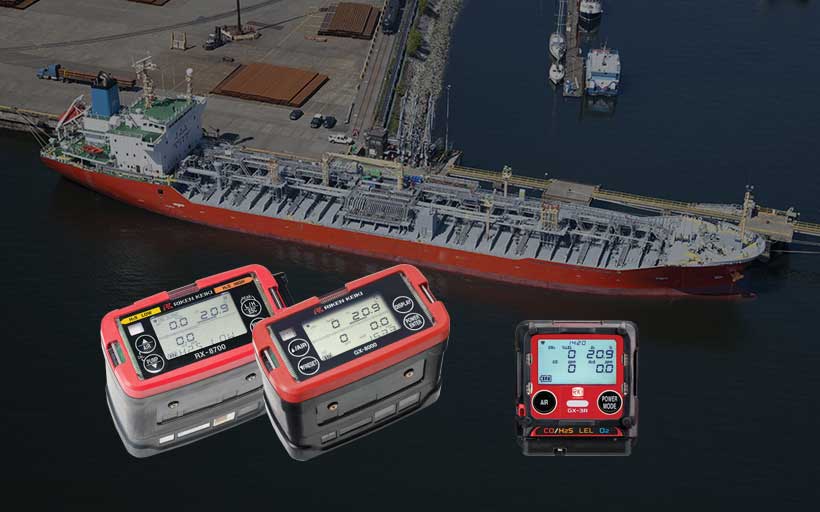Top Products
Portables
Fixed Systems
Industry
Specialty Products

Application
An inert space is one that has been purged with engine exhaust, nitrogen, or other gas mixtures not containing oxygen. It is a common practice on board ships to purge the headspace above petroleum-based product, or in empty product storage spaces to prevent the accumulation of a flammable mixture in the space. For a flammable mixture or fire to exist there are 3 necessary components: fuel, oxygen, and heat or ignition. This is often referred to as the Fire Triangle. By removing the oxygen from the space it eliminates one of the three necessary components thereby preventing the possibility of a fire even if flammable vapors are present. In other words, if there is no oxygen present, there cannot be an explosion.
For these reasons it is important to know both the level of hydrocarbon vapors and oxygen present in the headspace or empty tank. The level of hydrocarbon or flammable vapors in these types of spaces will often exceed the LEL (lower explosive level) and can even be in the percent volume range. It is also important to monitor for oxygen concentrations in these types of spaces to assure a good purge.
Problem
The most common type of meter used to test for flammables utilizes a catalytic type sensor, which will sense combustible gases at LEL levels. This type of catalytic sensor requires oxygen in order to function. If there is no oxygen, or a very low oxygen level is present, the catalytic sensor will not work. The meter will give false readings and a false sense of security. Sometimes a dilution fitting is used with a catalytic sensor to blend some oxygen in with the sample in order to get around this problem. This method can work, but is prone to errors. If the dilution fitting is forgotten or if it is partially or fully plugged, then the operator will get false or inaccurate readings.
RIKEN KEIKI’s portable gas monitors have been certified to the MED regulations. Riken Keiki is one of the only gas detection manufacturers whose range of marine instruments are certified to the MED regulation.
GX-3R Portable Gas Detector
The world’s smallest and lightest confined space monitor GX-3R ensures crew safety, measuring all gas types required to be detected inside bulk cargo.
GX-8000 Marine Gas Monitor
Multi-gas monitor equipeed with a catalytic combustion sensor that corresponds to every gas measurement requirement of the IBC code.
RX-8700 Oil Tanks Gas Monitor
Powerful pump enables fast measurement of HC/O2 measurement and improved work efficiency
RX-8500
Multi-gas monitor equipped with an Infrared Sensorfor high accuracy even in inert gas.
